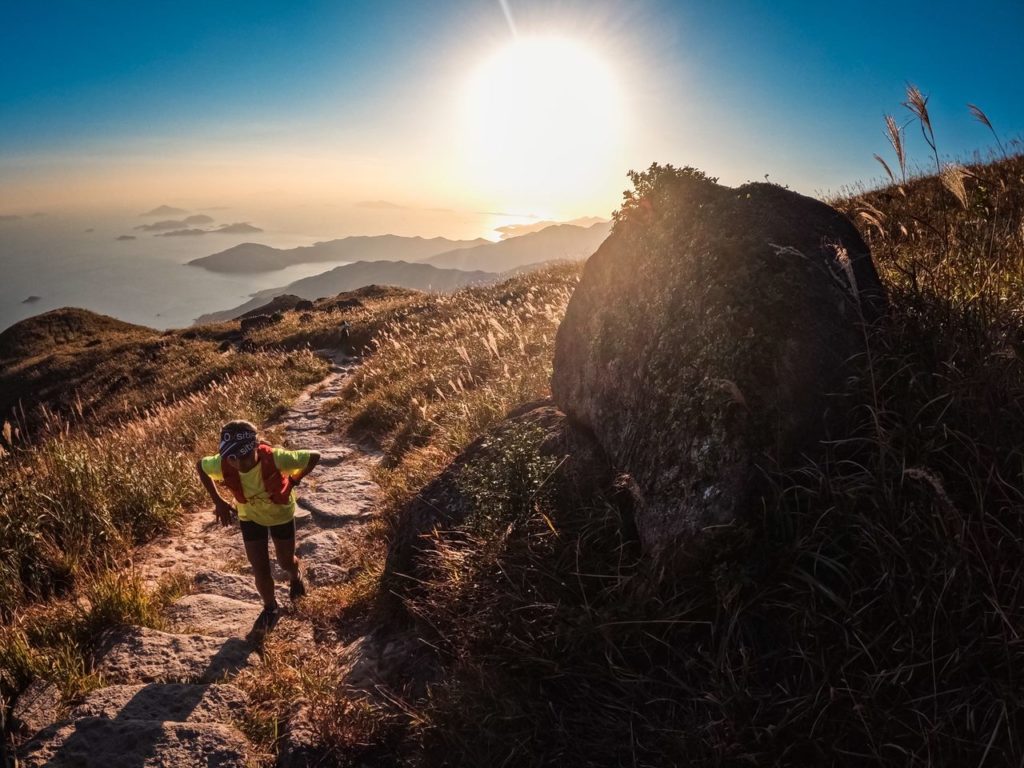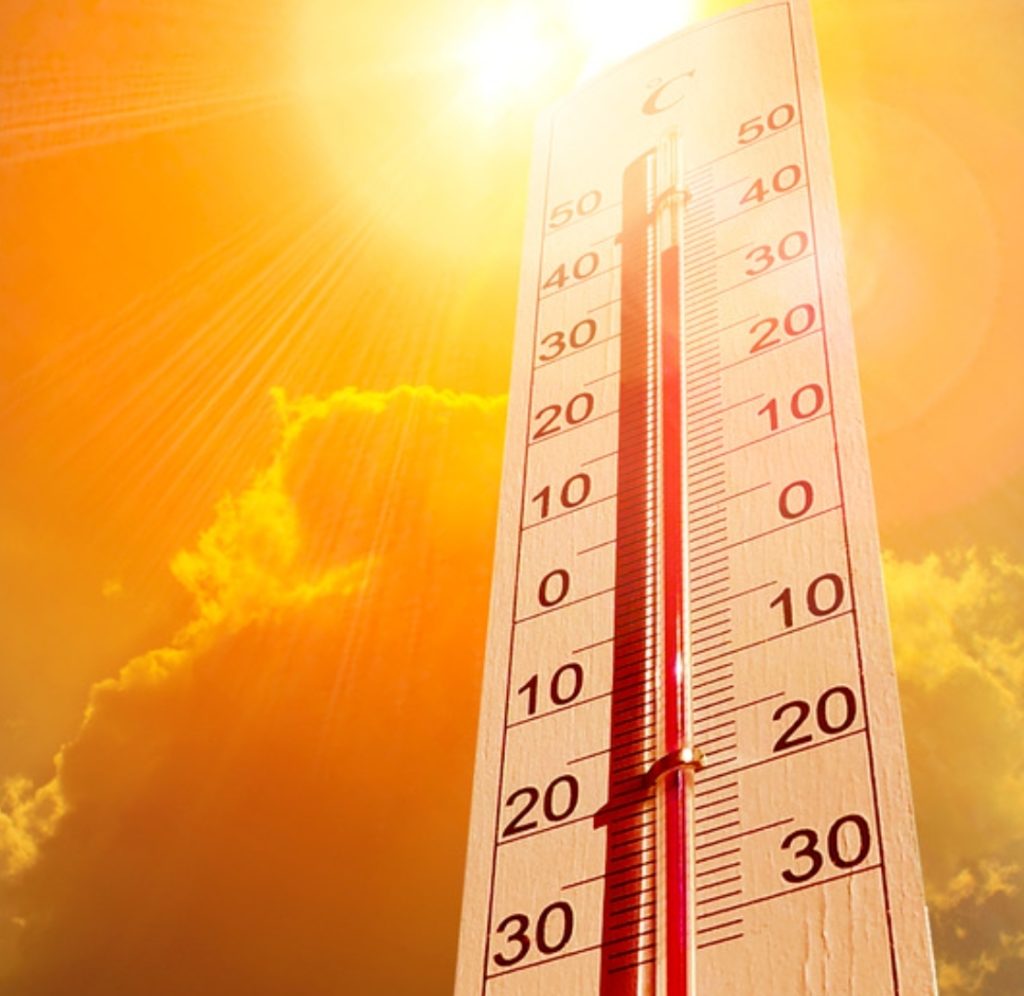Running heat training & the dangers involved – what to look out for & how to combat heatstroke
Exercise-related heat exhaustion is an illness caused by getting too hot while exercising. Simple? Not really so basic…
During heat exhaustion, your body temperature rises above the normal range , normal being 36.0°C (97F) to 37.2°C (99F). Heat exhaustion is less serious than other heat-related illnesses, like heat stroke. But some mild exhaustion can quickly progress to heat stroke, becoming dangerous, fast…
Where does all this heat come from and how to prevent it?
Up to 70% of body heat is generated by your muscles. In order to reduce this heat generation you want to reduce your total output. How? Well, you could slow down for starters. Secondly, the body naturally combats this heat build up. The human body is incredibly smart and adapts to excess heat through sweating: this causes condensation along the skin as sweat is evaporated thus lowering core temperature with blood plasma volume expansion; in turn increasing fluid and cardiovascular stability; hence a decrease in the metabolic cost of exercise. Typically these adaptions occur fairly rapidly with heat training .The bulk of adaptation occuring within 7 days and are complete within 14 days of exposure, whilst training in these hotter conditions.

Best forms of heat adaption:
- Natural heat acclimatisation (running in a warmer environment using midday lunch runs for eg, for increased temp adaption)
- Controlled intensity (via climatic chamber – often not accessible to the average Joe);
- Passive heating (post exercise sauna or hot water immersion/bath directly after your run). 15 – 20 mins will suffice. Maximum 45 mins. You also want to begin this passive regime daily about 15 days before race day and move to eery second day in the final 6 days prior to your event. Stick to sauna or bath post exercise as this allows you to reap the benefits in a shorter time frame as your body is already warmed up going in after a heavy exercise session.
- DO NOT artificially create heat by adding layers of clothing on your run – like a boxer or Jackass THE MOVIE sweat suit style…
Along with daily heat exposure whilst training, the body makes these cahnge mentioned about which allow you to thrive and survive in hot environments.
Bear in mind after 48hrs of no acclimation you’ll loose your well earned heat adaption gains at a rate of 2.5%/day. In those final 5 days pre race do around 2 x sessions in the sauna/bath to maintain the adaptation. Dry sauna vs infared sauna is preferred.

Managing heat
During training:
- Allow your body time to acclimate to the heat. Give yourself time to adapt well before race day as discussed above.
- Run by effort, not by pace – trying to maintain xx:xx pace in cooler weather vs trying to maintain the same pace in sweltering conditions will required vastly increased effort.
- Start your run before the sun rises or after it sets allowing for cooler overall temperatures. This gradually gets your body used to heat acclimatisation as starting a long run IN THE MIDDLE of the day may lead to an early end. On those long run days, e like to start early, get some decent miles in during cooler weather then work into the heat of the day, slowing down but getting in that adaption too.
- Wear light-colored, breathable clothing
- Run indoors – sometimes you need those tough interval sessions to count and running outdoors will reduce your ability to make any tangible progress as its just too damn hot. Treadmill work here is very acceptable – you’ll undergo less heat adaption (if any at all) but achieve better training load. Time and a place….
- Adjust your nutrition to include liquid dense fruits like watermelon and pineapple – check out our other article on nutrition here

Race day:
- Seek out shady spots;
- Hydrate well in the day before and day of your race;
- Work on actively drinking sufficient fluids leading up to your run;
- Brief your race crew on signs of heat exhaustion and have them monitor your progress through the day
Take steps to reduce your heat build up:
- Wear loose UV protective clothing and headwear – we like Ciele’s bucket hat (also UV protective)
- Wear light colours
- Increase evaporative cooling by getting wet – passing any stream or water point – drench yourself
- Drink ice cold fluids helping cool your core temp
- Ice – Western States style – employ ice bandanas around your neck and in your waistbelt. Ice hats (look funny) but work well too. Get your crew to have ice at the aid station during a race
- If all else fails… STOP. Assess. Wait 20 – 30 mins. Eat, drink and cool down in a shady spot before heading out again, if at all.
It’s always best to err on the side of caution and begin take active steps to lower the body temperature. The defining symptom of heat exhaustion is a body temperature of 101°F (38.3°C) to 104°F (40°C). Watch out!
Tell tale signs of heat exhaustion
Watch out for one or more of the symptoms below, in varying degrees of intensity:

- Rapid heart rate
- Rapid breath rate
- Excessive sweating
- Nausea
- Weakness
- Headache
- Muscle cramps
- Clammy or damp skin
- Dizziness
- Diarrhea
- Excessive thirst
- Difficulty coordinating body movements
- Vomiting
- Fainting
- Low blood pressure
Distress signs of heat exhaustion can be difficult to pinpoint as many are related just, well, just running. In general, proceed cautiously if you think your body’s responses seem at all exaggerated (like you’re sweating more than normal in that weather, or your heart seems to be beating faster than seems warranted at that effort and pace) and begin treating the situation as if it’s a more serious threat.
It’s important to note that someone experiencing heat exhaustion typically does not experience significant cognitive symptoms, though some mild confusion may be present. However, any signs of mental distress should be taken as extreme warning signs for the more serious heat illness: heat stroke.
Increased risk
There are a several factors that can increase the risk of developing heat exhaustion when running, including the following:
- Dehydration and not drinking enough fluid before and during your run
- Wearing too many clothes, fabrics that don’t breathe, or dark colors
- Drinking alcohol before running – never a good idea
- Having a chronic illness or certain medical conditions
- Not being acclimated to running in the heat and humidity
- Being in poor physical shape
- Being obese or significantly overweight
- Taking certain medications like antihistamines and stimulants
- Being very young or an older adult because thermoregulation isn’t as effective
How to Treat Heat Exhaustion When Running
If despite your best efforts, you or one of the running buddies with you develops heat exhaustion while you are running, the immediate treatment goals are to cool and hydrate the affected runner. If the runner is conscious and able to drink (not too disoriented or vomiting), then first steps are: Find shade and/or air-conditioning; shed extra layers of clothing; consider a cool bath (this is first-line treatment for heat stroke); sit and/or lie down and elevate the feet; and drink fluids (water and/or electrolyte-replacement drinks like popular sports drinks or coconut water).
If symptoms are more severe (the runner is extremely disoriented, unconscious, seizing, or vomiting uncontrollably), this raises concern for more severe heat illness and emergency medical services should be contacted. Get help quickly in this case….
Running in a hot climate is no joke – stay safe out there!
(Source: Daanen, H. A., Racinais, S., & Périard, J. D. (2017). Heat Acclimation Decay and Re-Induction: A Systematic Review and Meta-Analysis. Sports Medicine,48(2), 409-430. doi:10.1007/s40279-017-0808-x)


